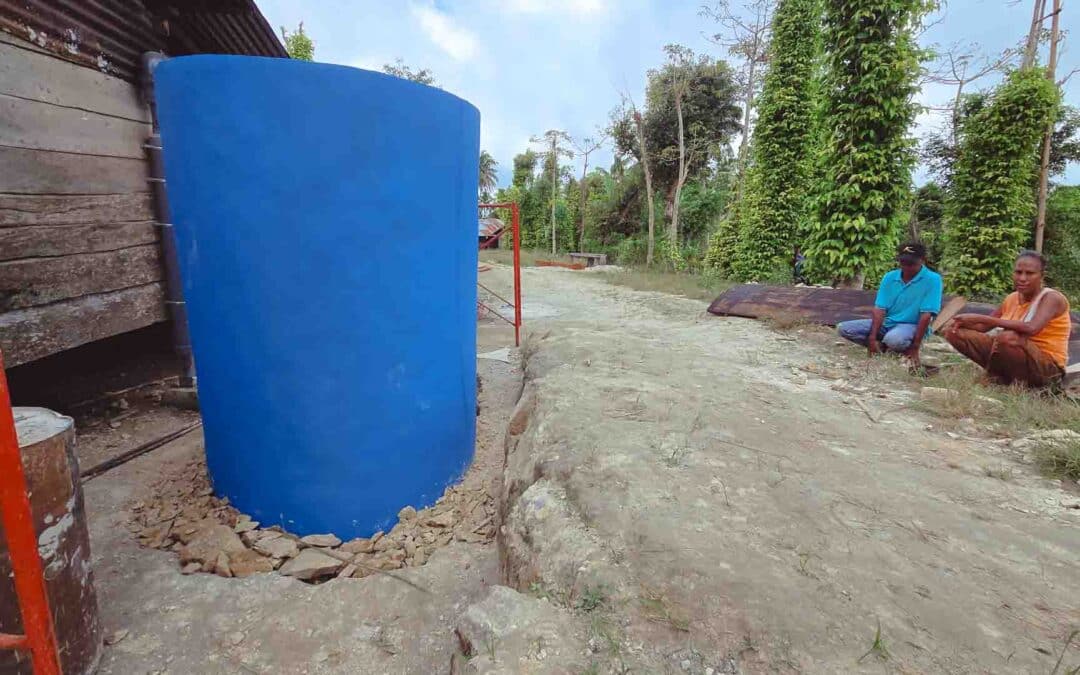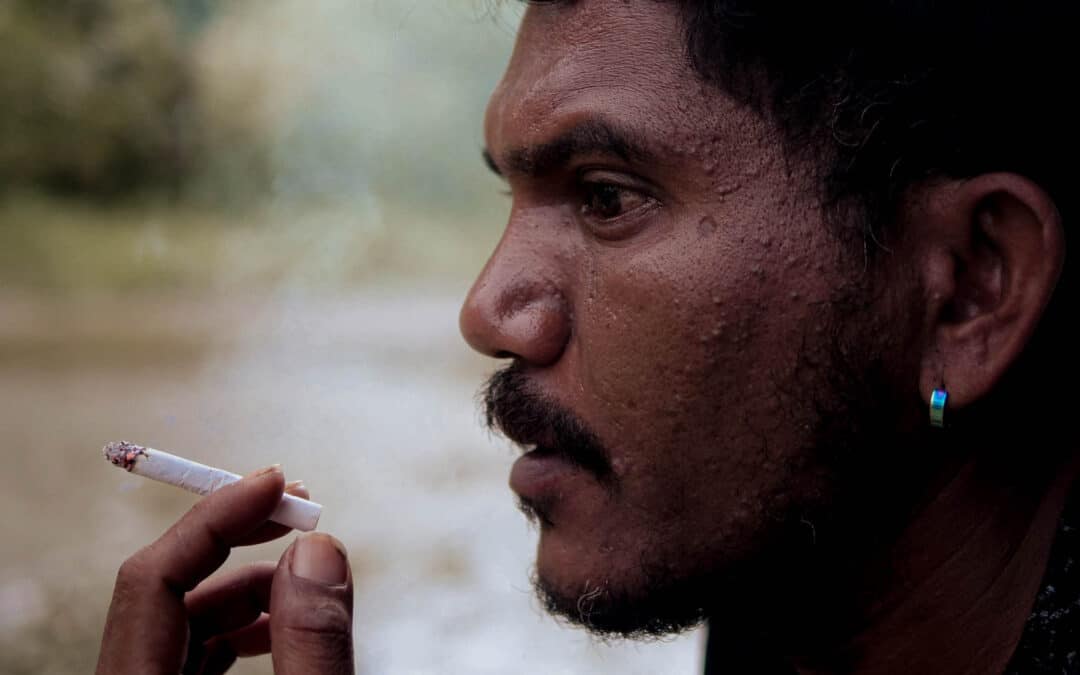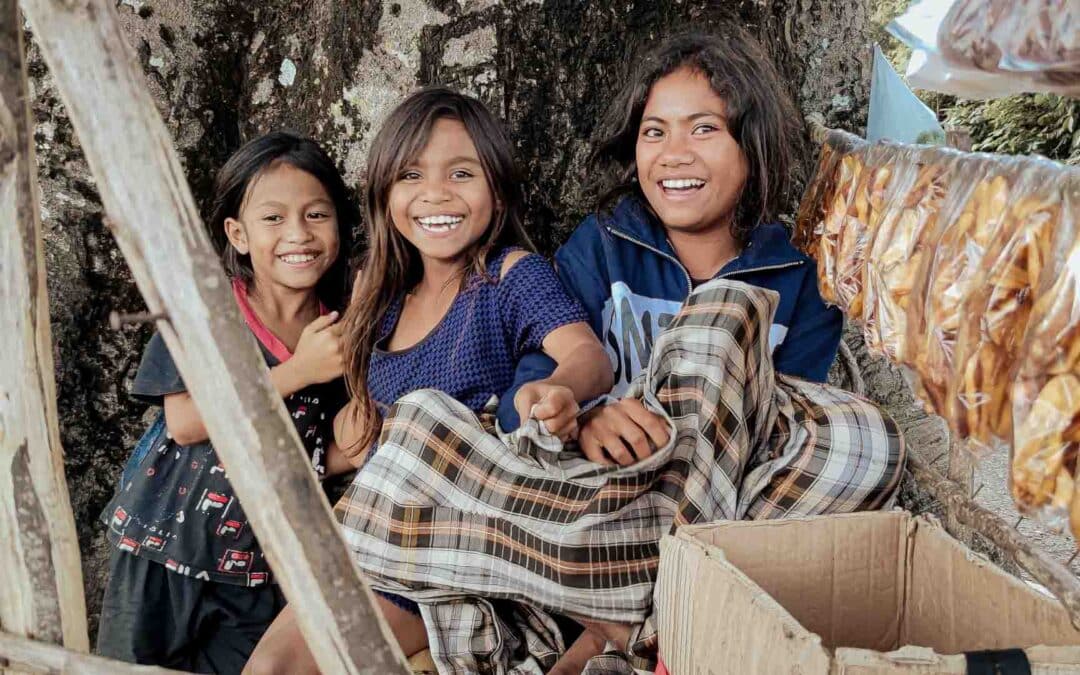Mumps cases have increased in rural areas of Indonesia. This article analyzes the transmission, health risks, and immediate measures needed to stop the increase in cases.
Addressing the growing threat of mumps in Indonesia, especially in at-risk rural areas: the importance of vaccination, public health education, and rapid response.

Children from rural Indonesia, where limited healthcare and vaccination access, put them at risk of preventable diseases like mumps. Fair Future works to protect their future.
Increasing Mumps Cases in Indonesia: An Escalating Threat in Remote Rural Areas | Indonesia is experiencing a worrying rise in mumps cases, especially in remote areas, where access to healthcare and information is highly restricted. The escalation of cases is troubling, underscoring the importance of understanding how the disease spreads, its associated risks, and preventive measures essential for controlling this outbreak.
Yes, but What is Mumps?
Let me explain in just a few words: Mumps is a contagious viral infection that can have serious consequences. Typical symptoms include painful jaw swelling, fever, fatigue, loss of appetite, and headache. It’s essential to get vaccinated against mumps with the MMR vaccine, particularly before travelling internationally.
Typical Symptoms of Mumps
Mumps symptoms usually manifest 16 to 18 days following exposure to the virus. Initially, they may present as mild fever, headache, decreased appetite, and fatigue. A hallmark feature is the painful swelling of the salivary glands situated beneath the ears or along the jawline, causing facial puffiness. Other possible symptoms include muscle aches, chills, and discomfort while chewing or swallowing. In more severe instances, complications like orchitis (inflammation of the testicles), meningitis, or even hearing loss can occur. (Ref: Associated Risks Chapter)
The Rapid and Stealthy Spread of Mumps Transmission
Mumps is caused by the mumps virus, a highly contagious paramyxovirus that primarily spreads via respiratory droplets. When an infected individual coughs or sneezes, the virus becomes airborne and can settle on surfaces or enter people’s respiratory systems nearby. Additionally, it can be transmitted through direct contact with saliva from an infected person, putting community events, schools, and households in close proximity, especially high-risk environments, for transmission. It should also be noted that a single infection with the mumps virus generally confers lifelong immunity.
Associated Risks: Beyond Just Swollen Glands
While Mumps is frequently regarded as a mild illness in children, it can result in serious complications. In both children and adults, the virus primarily causes inflammation of the salivary glands but can potentially impact other areas of the body as well. Notable complications include:
- Orchitis, inflammation of the testicles, can result in sterility, particularly in puberty-aged males.
- Oophoritis, or inflammation of the ovaries, and complications related to pregnancy are less common.
- Viral meningitis involves the virus entering the central nervous system, which may lead to severe neurological symptoms.
- Pancreatitis is the inflammation of the pancreas, characterized by intense abdominal pain.
- Hearing loss: While uncommon, a Mumps infection can result in permanent hearing impairment.
These risks are even more alarming in regions with limited healthcare infrastructure, where timely medical care is challenging to access and early diagnoses are nearly impossible.
What is Causing the Rise in Cases?
- Insufficient Vaccination: Limited access to the measles, Mumps, and rubella vaccine (MMR: measles, mumps, rubella) is a key contributor to the rise in cases. Many families in extremely rural regions lack complete vaccine coverage because of resource and infrastructure limitations;
- Limited Awareness: Public health education is scarce in these areas, making the population susceptible to outbreaks of contagious diseases;
- Substandard Living Conditions: Crowding, insufficient access to clean water, and poor sanitation facilities contribute to an environment conducive to virus spread;
- Enhanced Mobility: Economic growth and frequent inter-island travel can contribute to the spread of viruses, transferring infections from urban centres to more remote communities;
Taking Action to Prevent Mumps
Prevention mainly depends on vaccination. The MMR vaccine, administered in two doses, is more than 88% effective at preventing Mumps. Nonetheless, making vaccination a reality in Indonesia’s highly rural areas requires coordinated efforts:
- Mass Vaccination Initiatives: Mobile health teams must access the most isolated villages, receiving logistical and financial backing;
- Health Education: Training local health agents, like Kawan Sehat, is crucial to educating families about vaccination and proper hygiene practices;
- Isolating Infected Individuals: To prevent further spread, encourage the isolation of infected people for at least five days after symptoms appear;
Ways Fair Future Can Assist
The Fair Future Foundation, leveraging its specialized knowledge and network of community health agents (Kawan Sehat Agents), is positioned to significantly impact this crisis, especially with the Primary Medical Care Program. Key priorities include educating local communities, distributing medical supplies, and constructing sanitation facilities. Additionally, the Foundation can initiate awareness campaigns and hold workshops focused on Mumps prevention.
Addressing the increase in Mumps cases is an urgent challenge that demands action, awareness, and unity. By implementing appropriate interventions, we can safeguard thousands of lives in even the most remote regions of Indonesia.
Today, November 19th, 2024 – Alex Wettstein, Fair Future Foundation
Type of equipment we need
Educational Support for Schools and Children
Empowering children begins with access to education. We welcome donations that help us equip schools and learning centers. Educational books for all levels, school supplies such as notebooks, pencils, rulers, and chalkboards, interactive learning games, and uniforms are always needed. Laptops, tablets, and functional computer equipment can make a world of difference for children in remote areas, helping them stay connected to knowledge. Classroom furniture—desks, tables, and chairs in good condition—ensures children have a space to learn and grow.
Medical Equipment and Supplies for Health Centers and the Medical Truck
Access to healthcare saves lives. We need sterile syringes, medical gloves, bandages, dressings, disinfectants, and small surgical kits to provide essential care. Diagnostic tools such as stethoscopes, thermometers, blood pressure monitors, and malaria or polio tests help us respond to medical emergencies. Mobility aids like wheelchairs and crutches are essential for patients. Donations of maternity and newborn care equipment are critical to ensure safe births. Our Medical Truck also relies on PPE, infusion kits, and diagnostic devices to reach isolated communities in need of care.
Tools and Equipment for Construction and Water Infrastructure Projects
Building sustainable infrastructure is key to improving living conditions. Our projects need construction tools—hammers, saws, drills, and wrenches—along with materials such as cement, wood, and rebar. Donations of solar panels, batteries, and converters are essential to power water pumps for clean water access. We also need plumbing fittings, PVC pipes, and water tanks to complete wells and water systems. Proper safety gear—helmets, boots, and gloves—ensures the well-being of our teams during construction.
Clothing, Bedding, and Household Items for Families in Need
In ultra-rural areas, basic items can make a big difference. We welcome clean and gently used clothing for children and adults, as well as shoes suitable for the terrain—sandals, boots, and more. Bedding donations like blankets, sheets, and mattresses help families stay comfortable and ensure our health centers can care for patients overnight. Books and toys bring joy and learning opportunities to children. Your contributions provide dignity, warmth, and well-being to families with limited resources.
Support for Emergency Situations and Disaster Relief
Our teams are always ready to respond to emergencies such as natural disasters or health crises. Your donations can directly support relief operations—whether through first aid kits, flashlights, batteries, or tarps for temporary shelters. We are committed to reaching remote areas quickly, ensuring that affected communities receive the immediate assistance they need to rebuild and recover.















